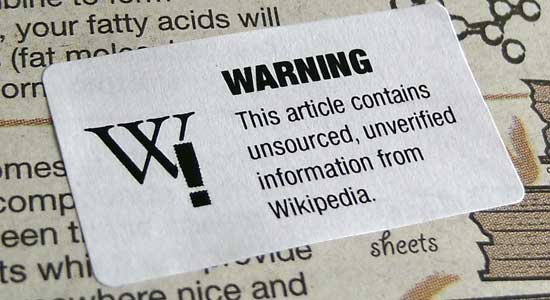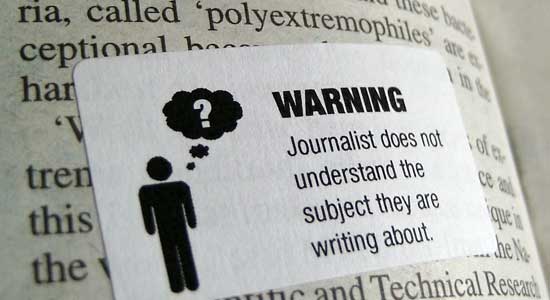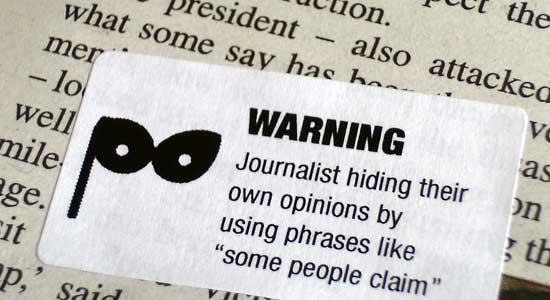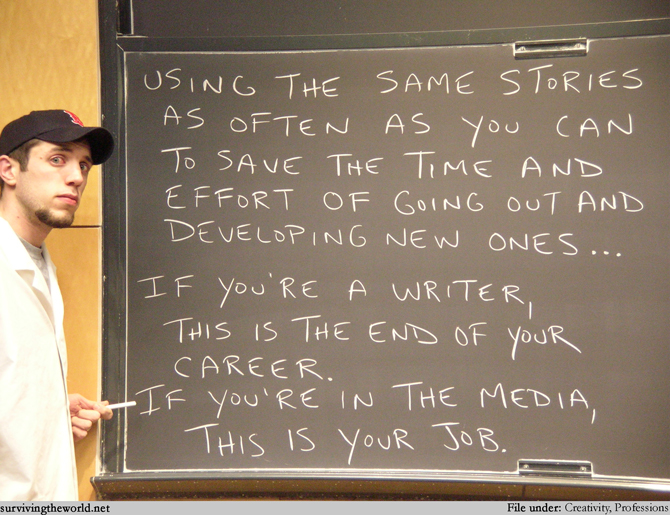As a former PR spin twit* nothing raises my hackles faster than the suggestion that PR is a pointless industry that thrives on the back of lazy journalism like a carrion bird picking the dead carcass of this once noble industry.
Crikey “broke” a story today, a bit of a non-story if you ask me, and it is certainly not “news” to anybody who knows anything at all… more than half of the stories in the media that Crikey monitored for a week originated in Public Relations.
After analysing a five-day working week in the media, across 10 hard-copy papers, ACIJ and Crikey found that nearly 55% of stories analysed were driven by some form of public relations. The Daily Telegraph came out on top of the league ladder with 70% of stories analysed triggered by public relations. The Sydney Morning Herald gets the wooden spoon with (only) 42% PR-driven stories for that week.
I’d be willing to bet that 95% of that 55% were about newsworthy issues that were worth breaking, and that they were reported in a fair and balanced manner.
As a PR spin twit I released hundreds of media releases a year – and probably 30% of them were never ever going to get printed but were released to meet KPIs, commitments to other organisations, or political expectations. Media releases are currency in modern business – a way that companies can be seen to be taking a proactive stance on issues. Who cares if this sort of release is picked up (well me, as a PR spin twit whose pay increases are dependent on a better than average rate of pick up of my stories)? Some media releases are produced simply to reflect the company line on issues upon request, others are glorfied advertorials that might get a run on a really slow news day – but the vast majority – are things that a company believes are going to make the news because they are inherently newsworthy. Media placement is competitive – especially when you’re in a major city where space is tight. You’re not going to cheapen your brand by releasing something that everybody recognises as dross – unless you’ve got a really good reason to do so. You want to be the guy the media calls when they need stories, not the guy who clogs their inboxes with meaningless corporatised tripe filled with weasel words.
I’m actually surprised at how low that figure is – I wonder if they excluded all sporting stories from the mix – which would be a folly, because I can’t think of any competitive sports team that doesn’t employ a media manager to train players in how to talk to the media after games. PR is happening any time someone talks to a journalist with an agenda. Unless the journalist gazumps somebody with an FOI story, or doorstops them with a bombshell question, you can bet that “PR” is at play when any spokesperson from a listed company, political party, advocacy body, or sporting team fronts a camera.
If this figure only considers proactive PR, rather than reactive PR, it’s still lowballing the actual reality – there are thousands of ways to place a story – and unless a journalist literally stumbles across the story themselves on the way to work you can bet they’ve got a source who is interested in seeing a story getting out. Whistleblowers are engaging in public relations.
It’s disingenuous to run this story suggesting that the landscape of journalism is changing, or indeed that there’s a problem with the idea of public relations. Journalists are interested in pursuing either truth or their newspaper’s particular agenda (read the hobby horses of their readership). These biases are usually so overt it’s as if they’re declared on the masthead or clearly obvious from the demographics they reach. So long as news is market driven – ie giving the masses’ itching ears what they long to hear – PR professionals have to be presenting stories in interesting and intriguing ways that will move units and sell advertising.
Here are some facts to consider when dismissing news coverage because it originates in PR…
- Most public relations professionals hold some sort of qualification in journalism or communication
- Most have a good eye for a story
- Most are killing more dumb stories in their organisation as editorial decisions (ie things people think are stories that aren’t) than they are releasing
- Most are investigating their claims and fact checking rigorously to avoid releasing bad information (which is deadly for any company that trades on its reputation)
- Most have a vested interest in the truth getting out – unless they’re working for a terrible and unscrupulous company in which case they’re interested in cover up and are culpable, or working for a politician in which case their bias figuratively written all over their faces.
PR people aren’t the bad guys – and spin mostly isn’t the enemy. Spin is the product of a culture that crucifies any company or individual brave enough to take an unpopular stand. If you want to know why politicians vacillate and pontificate rather than providing answers to questions from journalists look what happened to Tony Abbott when he admitted the he’s scared of homosexuals (which was admittedly a pretty stupid thing to say).
This quote from the editor of The Australian – Chris Mitchell – to Crikey is pretty telling…
“It’s very difficult I think, given the way resources have drifted from journalism to public relations over the past 30 years, to break away as much as you really want to … I guess I’m implying, the number of people who go to communications school and go into PR over the years has increased and the number in journalism has shrunk even more dramatically.”
Why are we assuming that the better trained and more talented journalists end up working for the media? I’d rather keep a good company from the maws of the ravenous tabloid journalist than feed the masses their latest sacrifice any day of the week. There is no real nobility in the fourth estate (the media) any longer.
The Crikey article reaches some stupid conclusions that are pretty close to scaremongering propaganda themselves.
Our investigation strongly confirms that journalism in Australia today is heavily influenced by commercial interests selling a product, and constrained and blocked by politicians, police and others who control the media message.
Why is controlling a message a bad thing? If it was up to the unscrupulous headline grabbing media barons they’re conduct crucifixions by media, or put heroes on pedestals, just to sell more papers. Why would the media run a moderate, unmanaged quote when they can take a sensational soundbite and beat someone they don’t like over the head with it. You’re stupid not to think about how you control your message in any context.
Some PR is stupid though – I’ll leave this rant with a priceless quote from a SMH story in the Binglegate case. The only winners in this case are the promoters (and perhaps Michael Clarke). Max Markson is using this opportunity to get himself on TV so every aspiring celebrity golddigger knows his name – and the best line in any of the stories surrounding the affair came from Bingle’s law firm. In a media release.
”We are not seeking publicity by this media release.”
How can you tell me a line like that is not worth a story of its own – and Crikey complains about 55%.
*A title bestowed on me by the Townsville Bulletin’s resident cynical “about town” columnist…










Blog Commenting Guidelines for Journalists
The Guardian Newspaper has posted its commenting guidelines for its own journalists.
I like them.
1. Participate in conversations about our content, and take responsibility for the conversations you start.
2. Focus on the constructive by recognising and rewarding intelligent contributions.
3. Don’t reward disruptive behaviour with attention, but report it when you find it.
4. Link to sources for facts or statements you reference, and encourage others to do likewise.
5. Declare personal interest when applicable. Be transparent about your affiliations, perspectives or previous coverage of a particular topic or individual.
6. Be careful about blurring fact and opinion and consider carefully how your words could be (mis)interpreted or (mis)represented.
7. Encourage readers to contribute perspective, additional knowledge and expertise. Acknowledge their additions.
8. Exemplify our community standards in your contributions above and below the line.
November 6, 2010